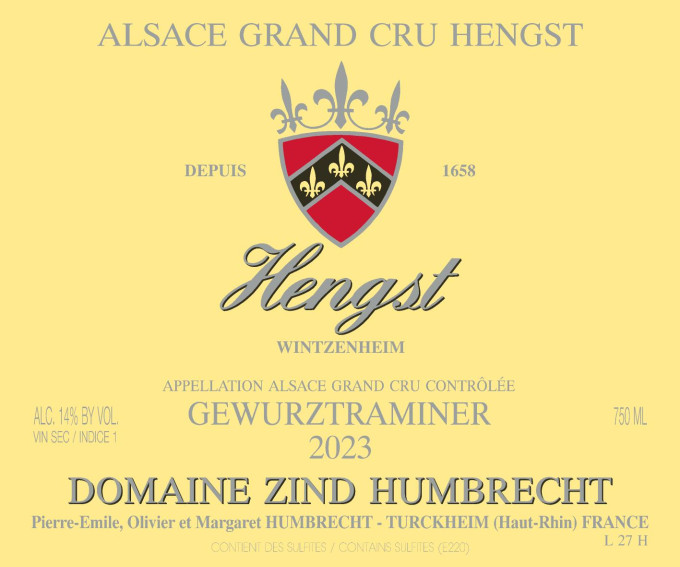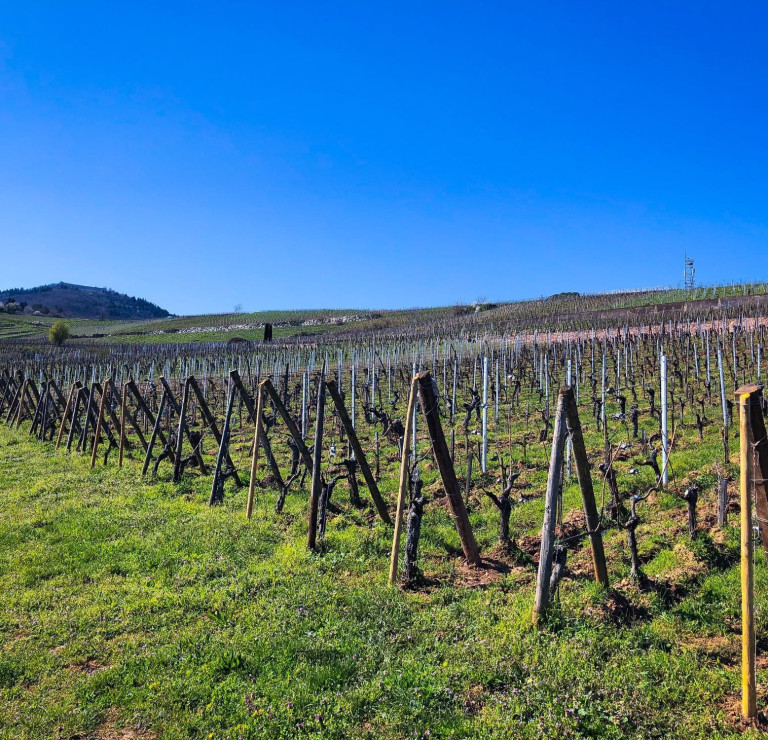
Technical presentation
| Bottling : | Août 2024 |
|---|---|
| Acquired alcohol : | 14.0° |
| Residual sugar : | 3.4 g/L |
| Total acidity : | 2.7 g/l H2SO4 / (4.2g/l Tartrique) |
| pH : | 3.6 |
| Yield : | 43 hl/ha |
| Optimum tasting : | 2027-2047+ |
| Average age of vines : | 72 years |
| Grape variety : | Gewurztraminer |
| Terroir : | Grand Cru Hengst |
| Sweetness index : | 1 |
| Soil : | Calcareous Marl from the Oligocene period |
Description of the wine Gewurztraminer Hengst Grand Cru 2023
Climate change in Alsace is mainly marked by an advancement of harvest dates and a significant temperature increase during the ripening period (August/September). It would be logical to think that with such a change, a grape variety like Gewurztraminer would be harvested with greater maturity and would become increasingly sweeter or high in alcohol with a loss of acidity. In fact, we are witnessing the opposite. Hengst is a solar terroir, it ripens earlier but phenolic maturity is also earlier thanks precisely to longer days and better sunshine in September versus October or even November. Botrytis is absent, fermentations are more vigorous, as is the case in 2023. The Hengst limestone, rich in iron, also makes it possible to obtain complex tannins, essential for this grape variety which should in fact be compared more to a red wine (tannins, low acidity, high maturity) than to a white wine! This 2023 will have been able to ferment dry without excess power. A great dry Gewurztraminer is a wine that is still rare in the region, but it is a surprising wine and above all one that allows for extraordinary food pairings.

Tasting notes
01/2025: Pale golden yellow colour. Dense nose of spices, pepper, anise, oregano… almost on its reserve which may seem surprising for a grape variety that is often too aromatic. The aggressive limestone of Hengst dominates. It gives the wine a tight, precise structure, where the noble tannins bring freshness and length on the finish. The aromatic is revealed more in the mouth than on the nose at this still young stage of the evolution of this wine. Velvety finish but without thickness.

The Hengst Grand Cru of Wintzenheim
The Hengst was first mentioned in the 9th century in an endowment of the Murbach Abbey. The lord of Haut Landsbourg as well as the bailiff of Kaysersberg shared the feudal rights up to the Great Revolution, whilst various noble families, abbeys and the bourgeoisie of Colmar exploited important parcels.